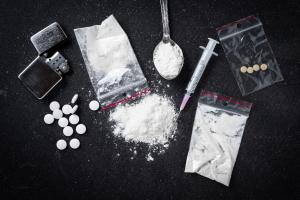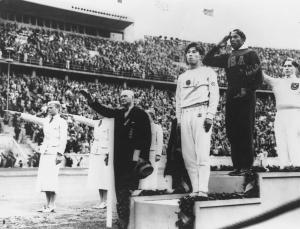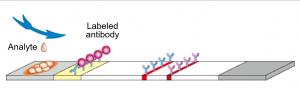Above are paintings by Mark Rothko (1903-1970), an American abstract painter who is renowned for his color field paintings. Actually, four of them are real ‘Rothko’, and one is a fake, which is the main subject of this story. Which one do you think is the fake one? Can you tell the difference?
Since the late 1900s, the price of renowned artworks has been skyrocketing. It reached its peak in the 2000s and is renewing every time some notable artworks are sold. Rich people buy them because of the artists’ reputation and influence in the art world and most of all because of their exclusiveness. After they buy these paintings, the new owners usually exhibit them in museums and galleries, and millions of people visit to see them. Because these paintings are traded at such high prices, it is crucial to appraise the paintings to see if they are genuine or not. Experts in this field precisely assess the condition of the painting, and they also check its provenance. Provenance is the history of ownership, which leads from the artist who made it, through every owner who owned it, to the last owner of the painting. But, like everything else in the world, this verification process also has a crack in it, and one of these pricy paintings held on the wall of an eminent museum may be a fake one. There isn’t always 100% certainty, you know. How can you be so sure? A true story about this crack in the art industry lies in the documentary Made You Look: A True Story About Fake Art (2020).
This is a story of 60 fake artworks over 20 years. These paintings were traded in a historic art gallery in New York, not in some street markets. They were sold at the price of a minimum of $9,000 to a maximum of $15.3 million to the richest people in the world. Of course, art dealers saw these paintings. They were held in museums and galleries and opened to the public. In sum, it was a con of $80 million. After all these deceits were exposed, the art industry has never been the same. Now, you will wonder how it was possible to deceive all the experts in the art industry plus the rich people for such a long time. How was it conducted so that no one knew?
The bottom line is that it was possible because it was conducted over 20 years. The place where all these fake paintings were traded was a gallery named M. Knoedler & Co. located in New York City. Founded in 1846, the gallery was a place where numerous artworks made by artists in New York were traded. Ann Freedman, the head director of the gallery at that time, was an old hand at art dealing. In 1995, Ann was introduced to a lady named Glafira Rosales by an employee at Knoedler. According to Ann, Glafira looked like a fine person from her appearance and behaviors, and there was nothing suspicious about her.
One day, Glafira brought a painting to Ann, saying that the owner of the painting wanted to sell it. Ann took a look. To her surprise, it was a Rothko. Mark Rothko was among the famous abstract painters who mainly painted in New York during the mid-1900s. Jackson Pollock and Willem de Kooning were other abstract painters who painted with him in New York during that era, and their paintings were traded at the highest prices in the global art market. This was another unknown painting by Rothko! If this was authentic, it could have been a real jackpot. Glafira told Ann that the owner of the painting was a rich man who wanted his name to remain confidential. His parents bought paintings in the 1950s in New York through an art dealer named Alfonso Ossorio. When they moved to Mexico, they took all the paintings with them. After they died, the paintings were sealed and kept in a basement for a long time. Now that their son was the owner and since he was not interested in the art, he wanted to sell them. Glafira noted that there were plenty of paintings other than this one. Ann entrusted experts with the verification of this painting right away. After a while, the experts told her that the painting looked in good condition and it looked real. Now, she was convinced.
Later, ten lawsuits were filed against Ann by customers who bought fake paintings from her. One case went to court, yet the rest of them were closed by reaching a settlement. Defendants of the case were Domenico and Eleanore De Sole. Domenico De Sole was the chairman of Sotheby’s at that time and was and still is the head of Tom Ford International, a luxury fashion brand. They had purchased the problematic fake Rothko painting. The defendants of the case were Ann and Michael Hammer. Michael Hammer was the president of Knoedler at that time. The plaintiffs argued that Ann sold the painting even though she knew it was fake. Ann counterargued that she had sold the painting because she believed that it was genuine, and she was also the victim of the con.
However, experts and journalists from the documentary say that it is highly unlikely that she didn’t realize the paintings were fake for all those years. Even if she belatedly found out they were fake, she should have tried to remedy the situation, but she did not attempt to do so, which in the end led to these catastrophic results. However inaccurate the verifications were or however foolish Ann was, the art world was fooled for 20 years. Those fake paintings were held at the galleries along with real ones, and they were also in the catalogs of the painters.
In this article, it has been impossible to cover every part of the story. But in the documentary, actual people involved in this case come out and tell their sides of the story. Ann, the De Soles who accused Ann, the attorneys from each side, the prosecutor who indicted Glafira, the first art connoisseur who raised doubts about the paintings that Ann sold, and many more are in the documentary. Interviews intersect and more fake paintings are shown. Above all, the film tracks the main culprit in this fraud, the reclusive painter who has mastered mimicking all the different styles of painters. If you became interested in this story, I highly recommend you watch the film. You will find out the ins and outs of this story, plus recent news of the people concerned after all these things happened.
*The fake painting that De Soles bought from Ann was the fourth one from the left in the row of five paintings at the top of the pages. From the left, the first one is Orange and Yellow (1956), the second is No. 13(White, Red on Yellow) (1958), the third is Green, Blue, Green (1969), and lastly, the fifth (the first from the right) is White Center (Yellow, Pink and Lavender on Rose) (1950), all by Mark Rothko.
Kim MinJi minjifromseoul@gmail.com
<저작권자 © 홍익대영자신문사, 무단 전재 및 재배포 금지>





